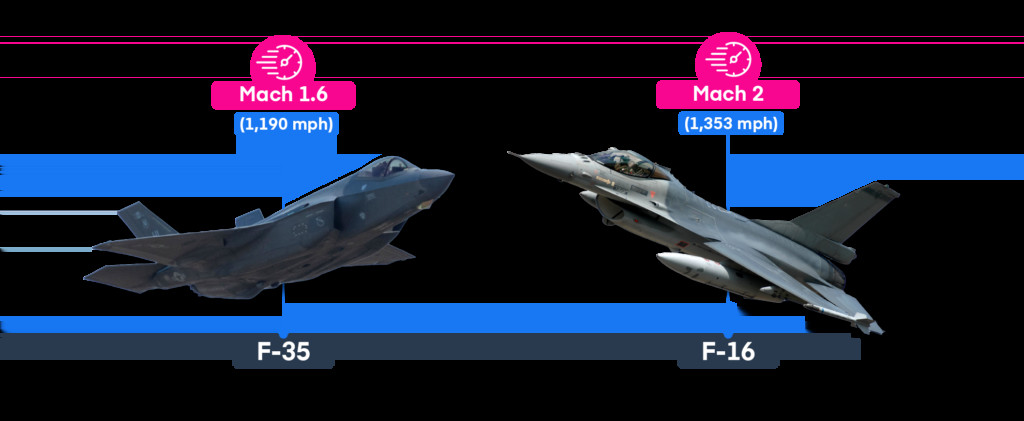When you gaze up and spot a jetliner gracefully soaring across the sky, you might wonder just how fast these aerial giants are actually moving. While they appear to drift lazily, passenger planes like the Boeing 737 are traveling at surprisingly high speeds. If you’ve ever asked yourself, “How Fast Can A 737 Fly?”, you’re in the right place to discover the answer.
In this article, we will delve into the typical speeds of a Boeing 737, explore the factors that influence its velocity, and compare it to other aircraft. Get ready to uncover the speed secrets of this workhorse of the skies.
Key Factors Determining a 737’s Speed
The speed of an aircraft isn’t as simple as looking at a car’s speedometer. In aviation, we often talk about airspeed rather than ground speed, as airspeed is what directly affects the aircraft’s aerodynamic performance. Furthermore, when discussing high-speed flight, especially for jets like the 737, the concept of Mach number becomes crucial.
Mach Number: This is the ratio of an object’s speed to the speed of sound. Mach 1 is the speed of sound, which varies with altitude and temperature but is roughly 767 mph (1,235 km/h) at sea level under standard conditions.
Cruise Speed of a Boeing 737: A Boeing 737 typically cruises at around Mach 0.78. In miles per hour, this translates to approximately 587 mph (944 km/h). This is the speed at which airlines operate the 737 for the majority of a flight, balancing speed with fuel efficiency.
Maximum Speed of a Boeing 737: While cruise speed is the norm, a Boeing 737 has a maximum operating speed (MMO – Maximum Mach Operating) of around Mach 0.82, or about 617 mph (993 km/h). However, flying at this speed is less fuel-efficient and is generally reserved for situations where time is of the essence or to recover lost time.
Why Not Fly Faster? The Balance of Speed and Efficiency
You might wonder why airliners like the 737 don’t fly even faster. The answer lies in a careful balance between speed, fuel consumption, and operational costs.
-
Fuel Efficiency: As an aircraft approaches the speed of sound, aerodynamic drag increases dramatically. Flying faster than Mach 0.82 for a sustained period would lead to a significant increase in fuel burn, making flights much more expensive for airlines and ultimately for passengers. The cruise speed of Mach 0.78 is carefully chosen to optimize fuel efficiency for typical flight distances.
-
Sonic Boom: While the Boeing 737 does not fly at supersonic speeds, aircraft approaching Mach 1 can encounter compressibility effects and drag rise. Supersonic flight, as experienced by the Concorde, generates sonic booms. These loud noises led to restrictions on supersonic flight over land, significantly limiting the routes and practicality of supersonic commercial travel.
-
Aircraft Design and Economics: Designing an aircraft to fly significantly faster than Mach 0.8 requires different and more expensive technologies and materials. For the vast majority of commercial routes and passenger demand, the current speed range offered by aircraft like the 737 is a sweet spot of speed and economic viability.
Comparing the 737’s Speed to Other Aircraft
To put the speed of a Boeing 737 into perspective, let’s compare it to other types of aircraft:
Commercial Airliners:
- Airbus A320: The primary competitor to the Boeing 737, the Airbus A320 family, has a very similar cruise speed of around Mach 0.78. Both aircraft are designed for short to medium-haul routes and prioritize efficiency in this speed range.
- Larger Long-Haul Aircraft (Boeing 787, Airbus A380): Larger airliners designed for long-distance flights, such as the Boeing 787 Dreamliner and the Airbus A380, typically cruise slightly faster, around Mach 0.85 (669 mph). The small increase in speed is more beneficial on very long flights, saving a more considerable amount of time.
 Boeing 787 and Airbus A380.
Boeing 787 and Airbus A380.
Private Jets:
Private jets often prioritize speed to save valuable time for their passengers. Newer models can cruise at speeds up to Mach 0.90 (715 mph) and fly at higher altitudes where the thinner air reduces drag.
Supersonic Airliners (Concorde):
The Concorde was a unique example of a commercial supersonic airliner. It cruised at an incredible Mach 2.04 (1,559 mph), more than twice the speed of a Boeing 737. However, its high operating costs and noise restrictions led to its retirement.
 A picture of the Concorde.
A picture of the Concorde.
Military Jets:
Military aircraft, especially fighter jets, are built for speed. Fighters like the F-16 can reach speeds of up to Mach 2 (1,353 mph) or even higher, although these speeds are typically achieved for short bursts using afterburners. Military transport and cargo aircraft, however, fly at speeds closer to commercial airliners, around Mach 0.77 (520 mph), similar to the 737’s range.
 F-35 and F-16.
F-35 and F-16.
Small General Aviation Aircraft:
On the slower end of the spectrum are small general aviation airplanes like the Cessna 172 or Diamond DA40. These aircraft typically cruise at speeds around 125 knots (143 mph), significantly slower than a Boeing 737. They use piston engines, which are less powerful and operate optimally at lower speeds and altitudes.
 Diamond DA40.
Diamond DA40.
The Future of Aircraft Speed
While the Boeing 737 and similar airliners are unlikely to see drastic increases in speed in the near future due to efficiency considerations, the quest for faster air travel continues. There’s renewed interest in supersonic passenger flight, with companies like Boom Technology developing aircraft like the Overture, aiming for speeds of Mach 1.7 (1,100 mph).
Looking further ahead, hypersonic flight, exceeding Mach 5, is being explored for even faster travel, potentially shrinking intercontinental journeys to just a few hours. However, hypersonic passenger travel is still in the conceptual stages and faces significant technological and economic hurdles.
Conclusion
So, to answer the initial question directly: a Boeing 737 typically cruises at around 587 mph (Mach 0.78). While not supersonic, this speed is a testament to decades of engineering optimization, balancing speed, efficiency, and passenger comfort for millions of flights every year. The Boeing 737 remains a cornerstone of modern air travel, efficiently connecting people and places across the globe at impressive speeds.
